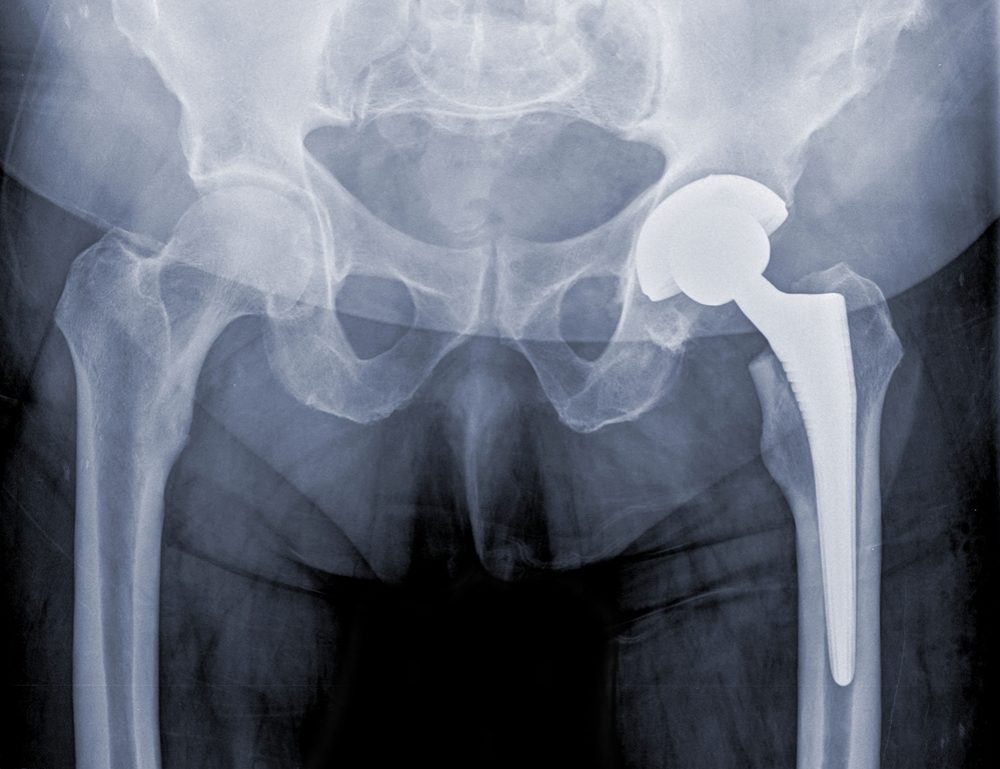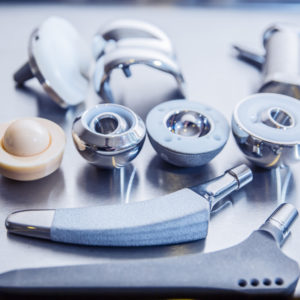Metal-on-Metal Hip Replacement Follow Up Costs Should Be Born By Manufactures: Editorial

Medical device regulators in the U.K. say that problems with metal-on-metal hip replacements are so common, and can cause such significant harm, that anyone who has one of the artificial hip systems should undergo a regular series of tests designed to check for metal blood poisoning and other reactions linked to the devices.
As a result of these recommendations, an editorial published last month in The BMJ indicates that the manufacturers of metal-on-metal hip replacements should bear the costs associated with these additional tests and treatments.
The Medicines and Healthcare products Regulatory Agency (MHRA) published updated guidelines (PDF) in June, regarding the early detection of soft tissue reactions in patients with metal-on-metal hips. The guidelines call for all patients to get blood metal level tests and undergo an annual follow up. In cases where there is a negative change in the Oxford Hip score assessment, or if they show signs of elevated metal levels in the blood, they should then undergo MRI or ultrasound.

Learn More About
Lawsuits are being reviewed for several different dangerous and defective hip replacement systems.
Learn More About this Lawsuit See If You Qualify For CompensationSigns of rising levels of metal in the blood, or an abnormal imaging result, should lead surgeons to weigh whether revision surgery is necessary, according to the MHRA.
The guidelines update a 2012 guidance regarding metal-on-metal hip blood testing, which simply called on patients with metal hip implants to have their blood checked once a year for signs of metallosis.
Metallosis, or metal poisoning caused by an increase in metal ions in the blood, has been linked to tissue damage, tumors and may increase the risk of cancer according to some research.
In the BMJ editorial, Andy Carr, Nuffield professor of orthopaedic surgery at the University of Oxford, questioned the guidelines’ effectiveness and noted that it would lead to the testing of tens of thousands of patients.
“It remains to be seen whether this substantial expansion of patient surveillance will identify soft tissue complications at an earlier stage, so that outcomes can be improved. Regular assessment of asymptomatic patients will require careful handling of patients’ concerns and expectations,” Carr wrote. “The new requirement for review of more than 45,000 asymptomatic patients will also be costly. There is a strong case for manufacturers bearing some, if not all, of this burden.”
Metal-on-Metal Hip Problems
Metal-on-metal hip replacements have been sold by a number of different manufacturers in recent years, featuring a metal femoral head that rotates within a metal acetabular cup.
Unlike other artificial hip designs, which typically feature metal-on-ceramic or metal-on-plastic, the metal-on-metal hips have been found to release microscopic metallic debris as the parts rub against each other. This has been linked to reports of loosening and failure, often within a few years after the artificial hip is implanted.
Most of the devices were introduced in the U.S. through the controversial fast-track 510(k) approval process, which only required that the device be a “substantial equivalent” to an already existing device approved by the FDA. However, the snowball effect of the substantial equivalence test has allowed many devices now considered unreasonably dangerous and defective to be implanted in thousands of Americans.
In the recent editorial, Carr also took aim at approval processes in the U.K. for failing to adequately vet the devices before allowing them on the market.
“Arguably, this problem has arisen partly because the regulatory approval pathways did not require evidence of safety and effectiveness before metal-on-metal hips were marketed,” he wrote.
A number of high profile recalls have been issued, and product liability lawsuits over defective hip and knee replacements have been filed by thousands of individuals nationwide in recent years, alleging that serious design defects should have been discovered before the implants were marketed for use among younger individuals.
One of the most recent was a Stryker LFit V40 recall, which was just announced last year, indicating that certain large-diameter femoral heads manufactured before 2011 may experience taper lock failures. This typically results in loss of mobility, pain, inflammation, adverse local tissue reactions, dislocation and the need for revision surgery, among other complications.
There are a growing number of Stryker hip lawsuits being pursued in various different courts by individuals who experienced problems after receiving an LFit v40 femoral head due to problems involving premature failure, corrosion and cobalt metal blood poisoning.
As hip replacement lawyers continue to review and file cases for individuals nationwide, it is ultimately expected that hundreds, if not thousands, of cases may be brought in the coming weeks and months.
Get more articles like this sent directly to your inbox.
"*" indicates required fields






0 Comments